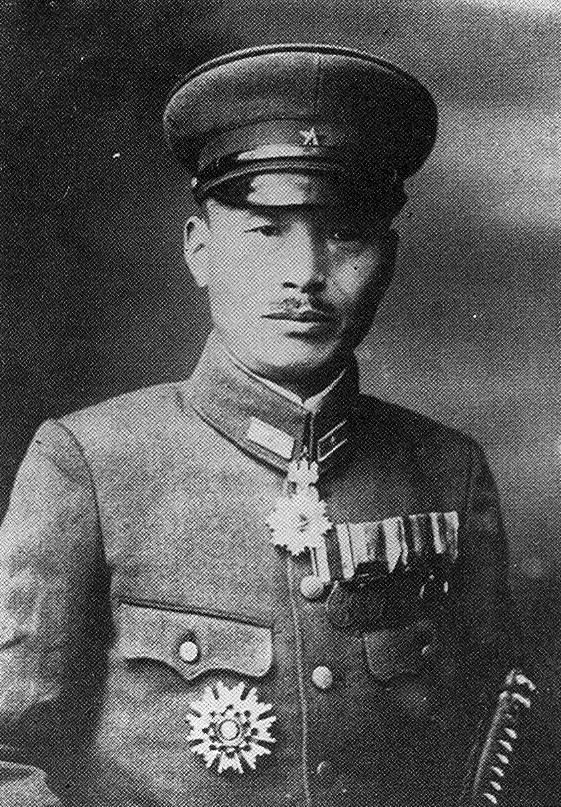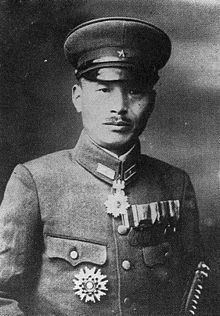Years of service 1911–42 | Rank Lieutenant General Name Tomitaro Horii | |
 | ||
Born November 7, 1890Hyogo prefecture, Japan ( 1890-11-07 ) Died November 23, 1942(1942-11-23) (aged 52)New Guinea | ||
Tomitarō Horii (堀井 富太郎, Horii Tomitarō, November 7, 1890 – November 23, 1942) was a lieutenant general in the Imperial Japanese Army during World War II. After graduating from the Imperial Japanese Army Academy in 1911, Horii served in China before undertaking a variety of regimental appointments. Following Japan's entry into World War II, he commanded a division during the capture of Guam before commanding the Japanese force tasked with capturing Port Moresby. While attempting to canoe down the Kumusi River to reach Japanese forces fighting around Buna–Gona in November 1942, Horii drowned. His canoe was swept out to sea and capsized.
Biography

Born in Hyōgo Prefecture, Horii became an infantry officer following his graduation from the 23rd class of the Imperial Japanese Army Academy in 1911. He was later assigned to the headquarters of the Shanghai Expeditionary Army, and in early 1932 during the prelude to the Second Sino-Japanese War, was involved in the January 28 Incident.
From 1935 to 1937, Horii was attached to the IJA 12th Infantry Regiment, having previously attended Waseda University. He became commander of the IJA 78th Infantry Regiment in 1938, after his promotion to colonel the previous year. In March 1940, Horii was promoted to major general. The following year Horii was appointed commander of the Nankai-Detachment (Nankai-Shitai(南海支隊)) of the IJA 55th Division, part of the South Seas Force. Horii led this organization in the Japanese invasion and subsequent capture of Guam during December 8–10, 1941; following this engagement, Horii served briefly as the Japanese military Governor of Guam.
During the New Guinea campaign, Horii and his South Seas Force were assigned to the invasion of Port Moresby, but were turned back after the escorting naval force was attacked by Allied forces during the Battle of the Coral Sea. The Japanese then planned an overland attack to capture the town by advancing from the north coast. In July 1942, they landed to established beachheads at Buna, Gona and Sanananda. This marked the beginning of the Kokoda Track campaign. The South Seas Force, under Horii's command, advanced using the Kokoda Track to cross the rugged Owen Stanley Range.
By 16 September, after heavy fighting against a small Australian Army force, Horii's command had advanced as far as Ioribaiwa, and was close enough to see the lights of Port Moresby. In light of reverses at Guadalcanal, the Japanese command determined it could not support both battles and, on 23 September, Horii was ordered to withdraw his troops on the Kokoda Track until the issue at Guadalcanal was decided. Limited provision had been made for the resupply of Horii's force and, by this time, the situation had reached a crisis. On 26 September, the Japanese commenced to withdraw from the front line. They fought a well-ordered rear-guard action back over the Owen Stanley Range, with the Australian forces in close pursuit.
Horii's force had been severely depleted by lack of supply but at Oivi, near the northern end of the Kokoda Track, Horii's force received both resupply and reinforcement. The Japanese suffered heavily in the battle around Oivi–Gorari from 4 to 11 November, and the well-ordered withdrawal that had been planned quickly disintegrated into a rout. The Australians crossed the Kumusi River at Wairopi on 16 November and were now about 65 km (40 mi) from Buna–Gona.
The flooded river blocked the retreat of Horii's force. Horii decided to raft down the river with a small party so he might more quickly reach the Buna–Gona positions that were being threatened by the Australian advance. Gunfire had been heard from the coast. When the raft became snagged on trees, he took to a canoe that was found by the river's edge. The canoe was swept out to sea and capsized during a storm. Horii drowned but his orderly survived to report his death. Horii was posthumously promoted to lieutenant general.
